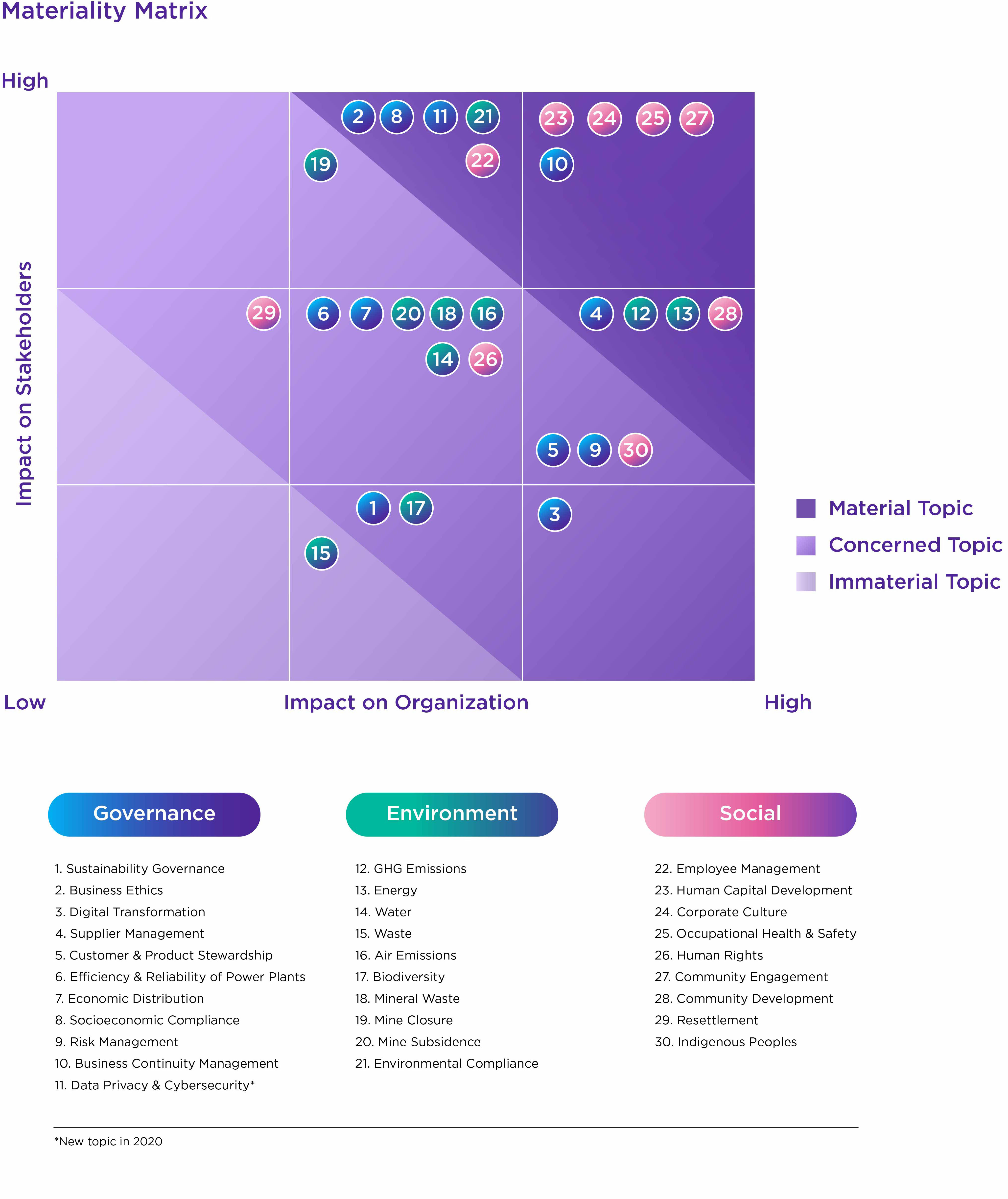The assessment and prioritization of material topics are carried out through the corporate management standard, which was developed based on the internationally recognized Global Reporting Initiative (GRI) Standard and AA1000 AccountAbility Principle Standard (AA1000APS), while taking into consideration of the governance, environment and social aspects for impacts on the Company and stakeholders. The results of assessment materiality are annually reviewed and approved by the Sustainability Committee.
Process of Materiality Assessment
1. Identify sustainability topics
The various stakeholders’ expectations are considered and analyzed alongside the master list, which is derived from an overview of the relevant regulations, material topics of related industry sectors, and those identified by international sustainability standards or assessments, and matters of global concern.
2. Identify impacts on organization
The degree of impact on the organization is assessed for each of the identified sustainability topics, focusing on the financial, operational, strategic, reputational, and regulatory aspects along with the likelihood of each incident occurring and its respective magnitude.
3. Identify impacts on stakeholders
The degree of possible impact on stakeholders for each sustainability topic is determined together with the level of influence those stakeholders have on the organization.
4. Prioritize sustainability topics
The topics are prioritized into three categories according to their level of impact on the organization and stakeholders. The three categories are material topic, concerned topic, and immaterial topic.


